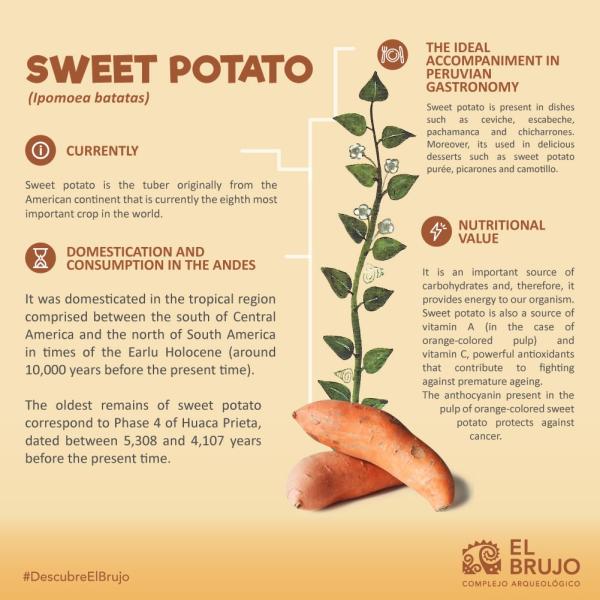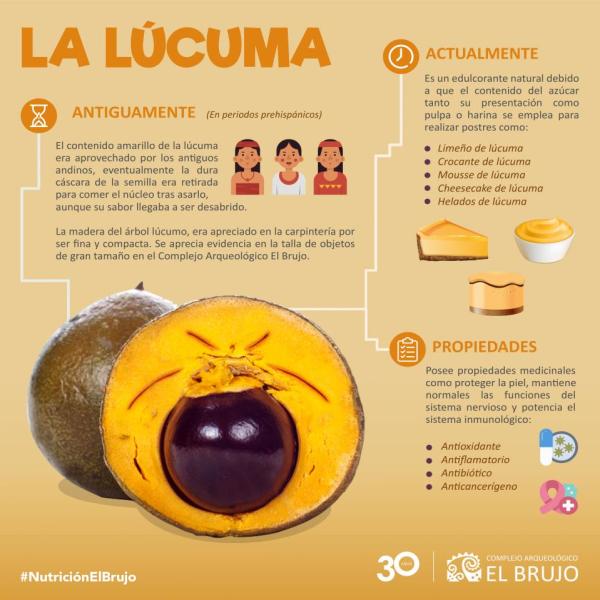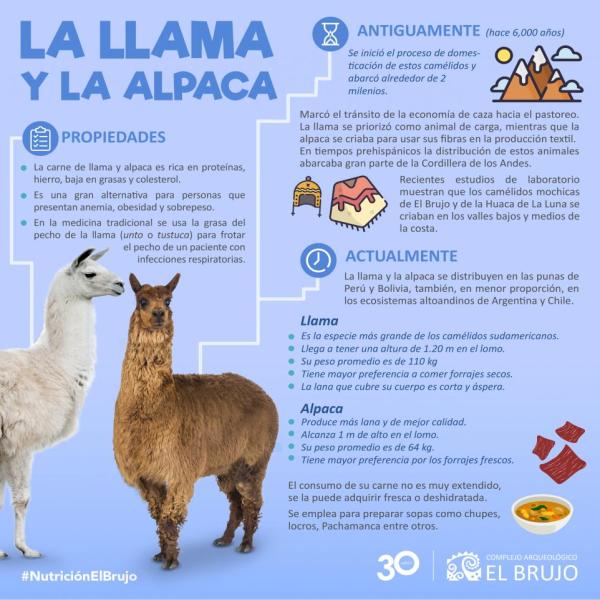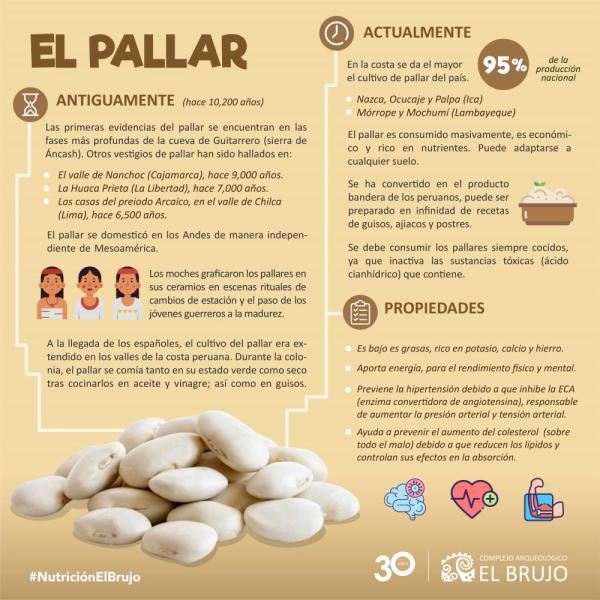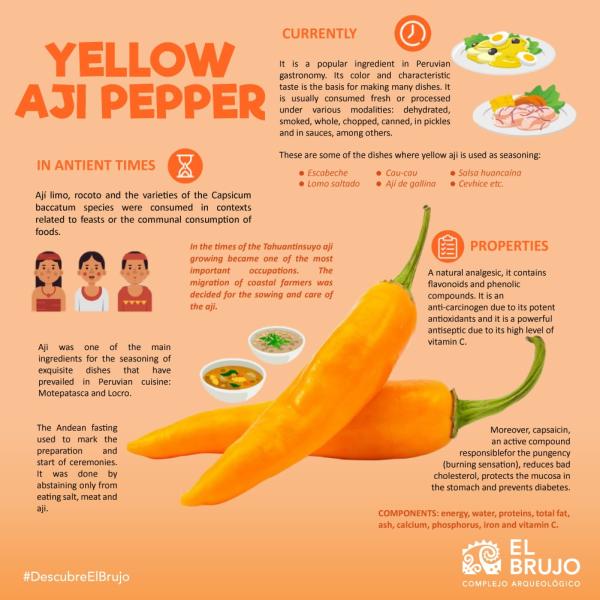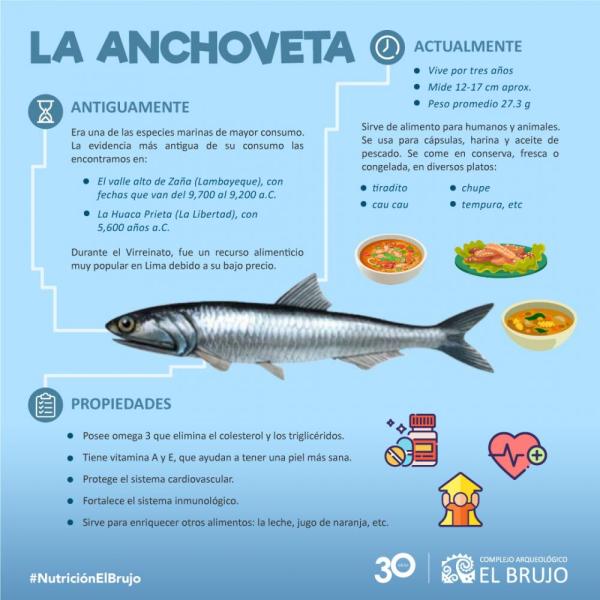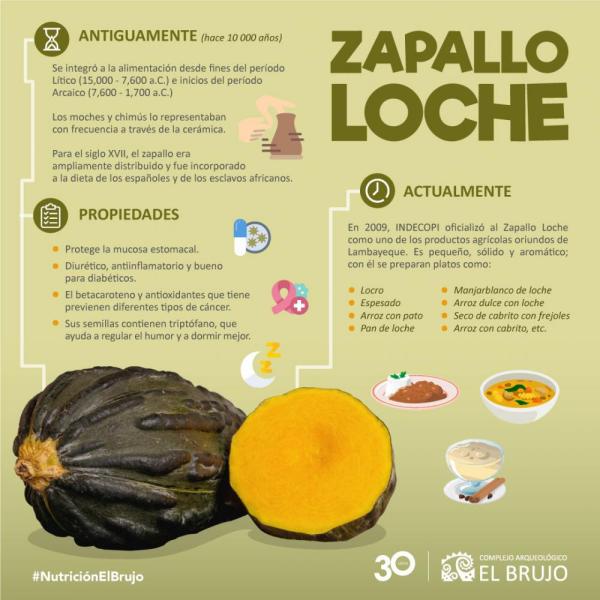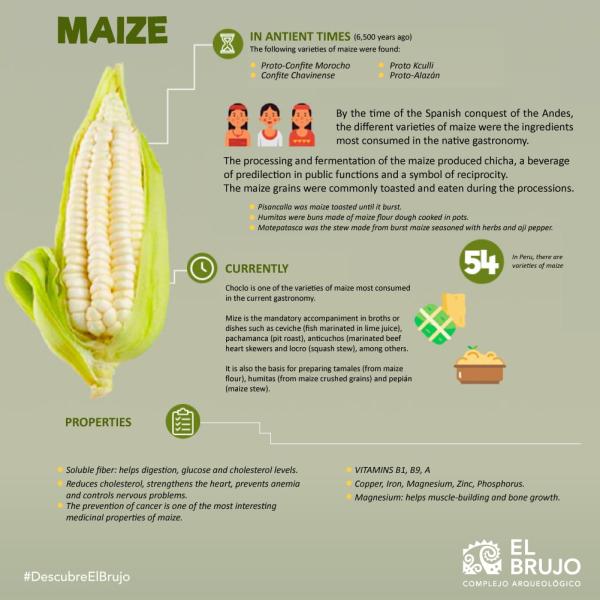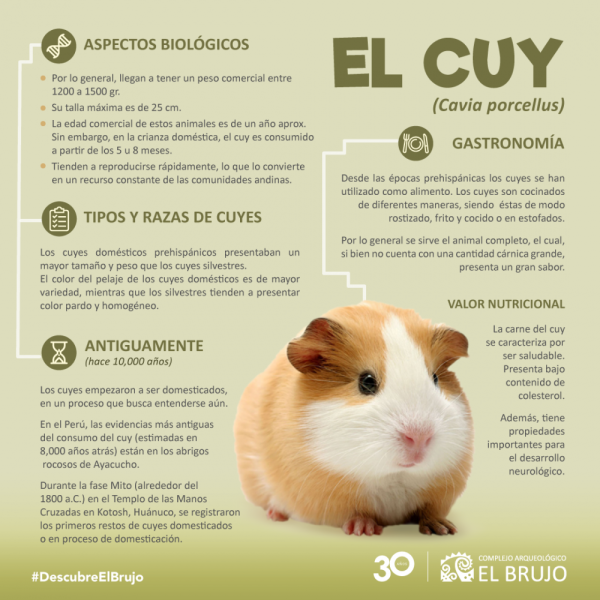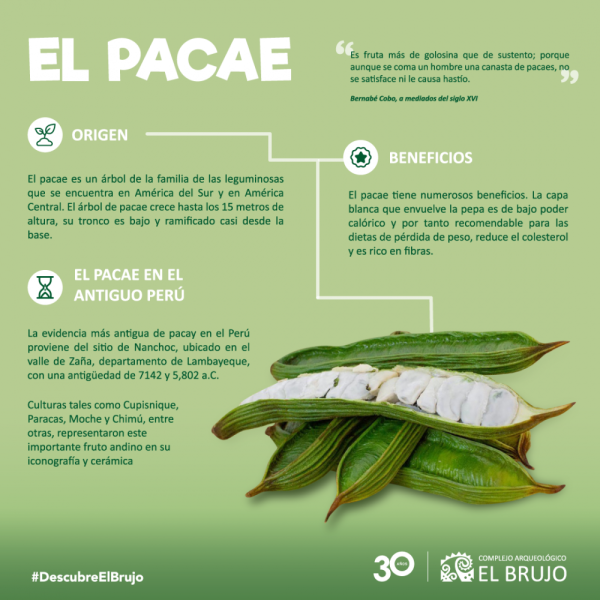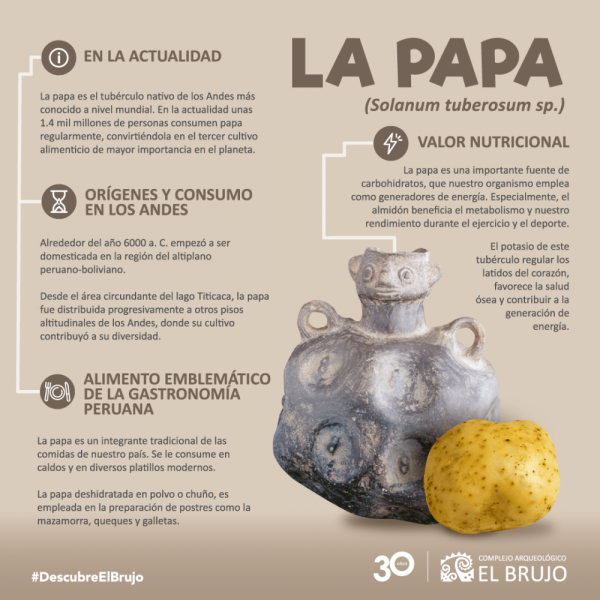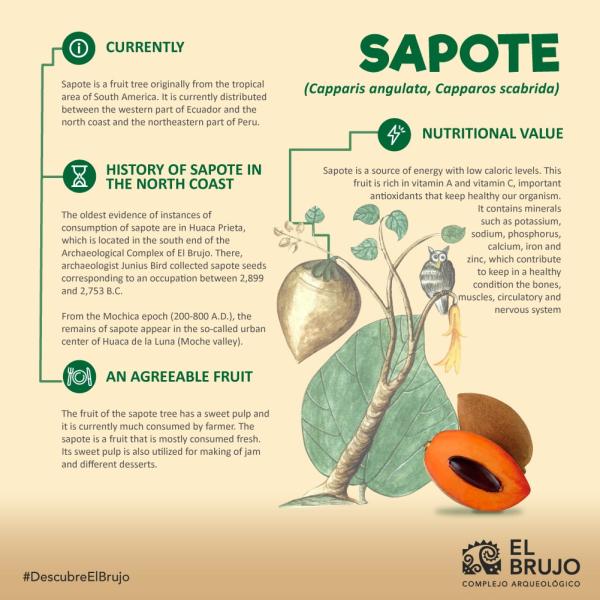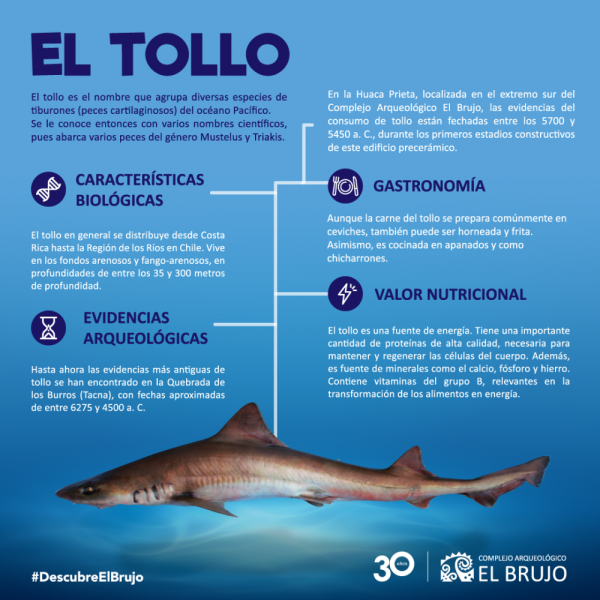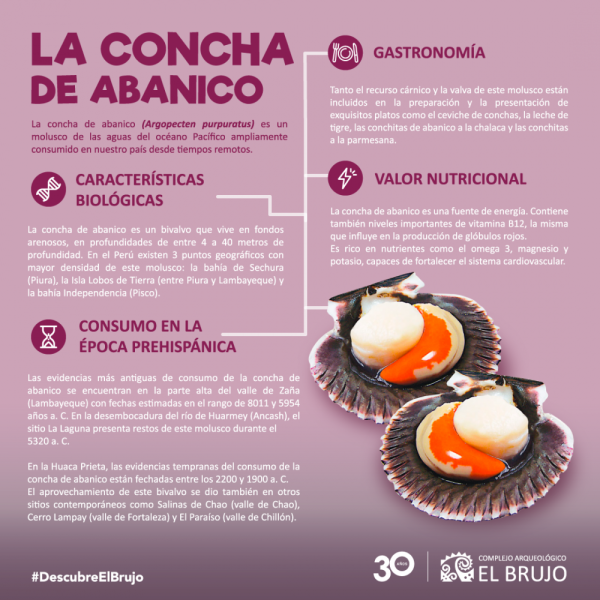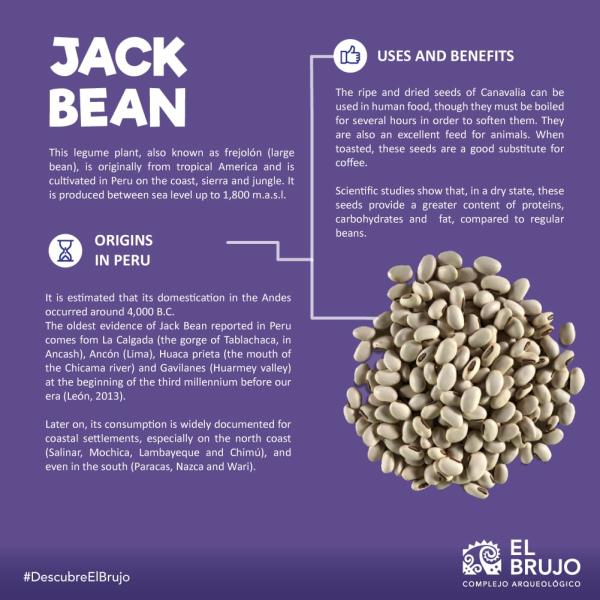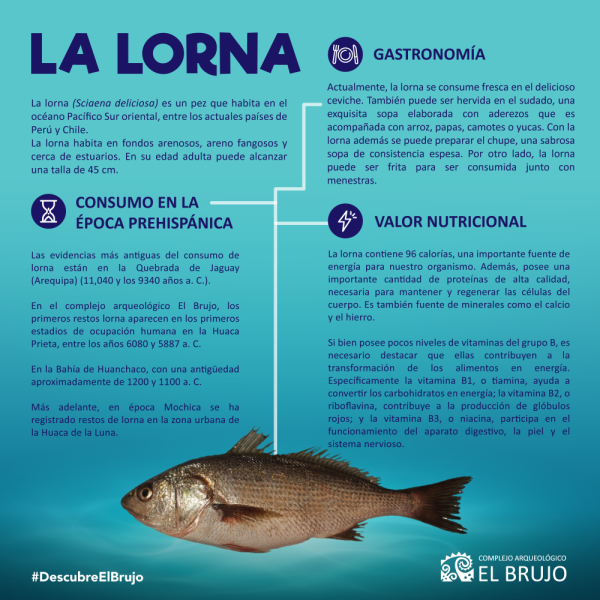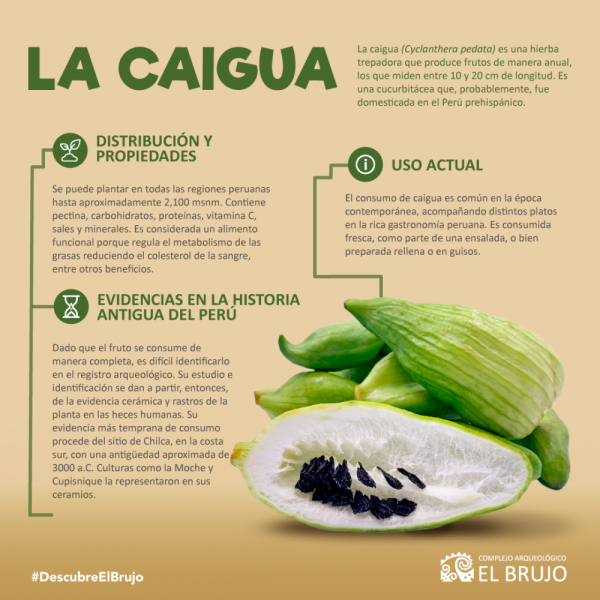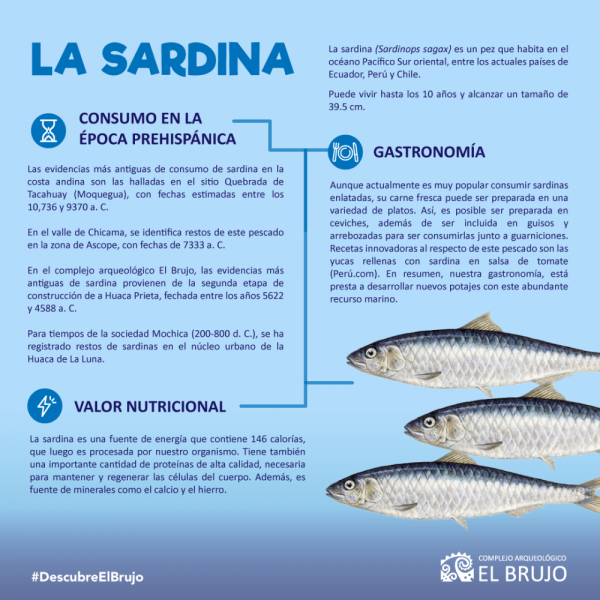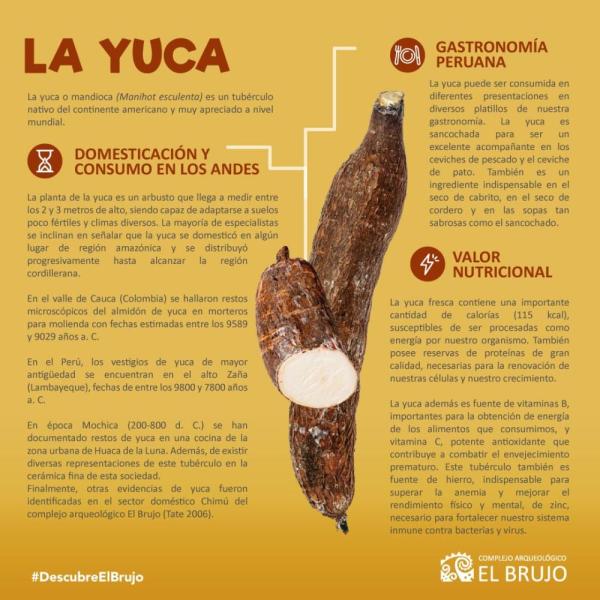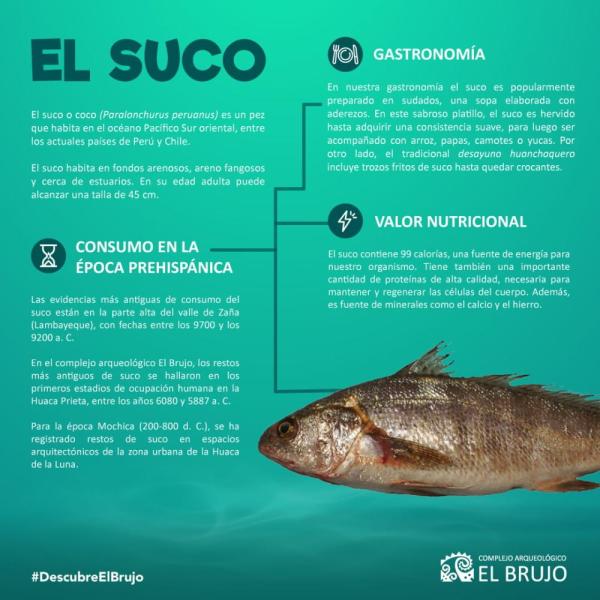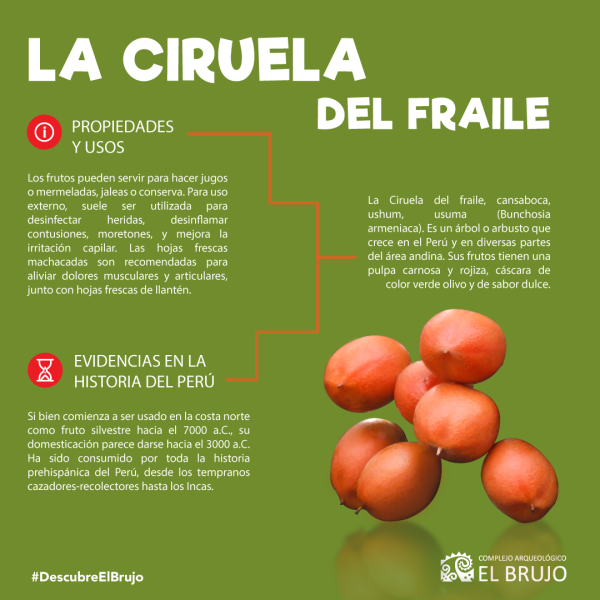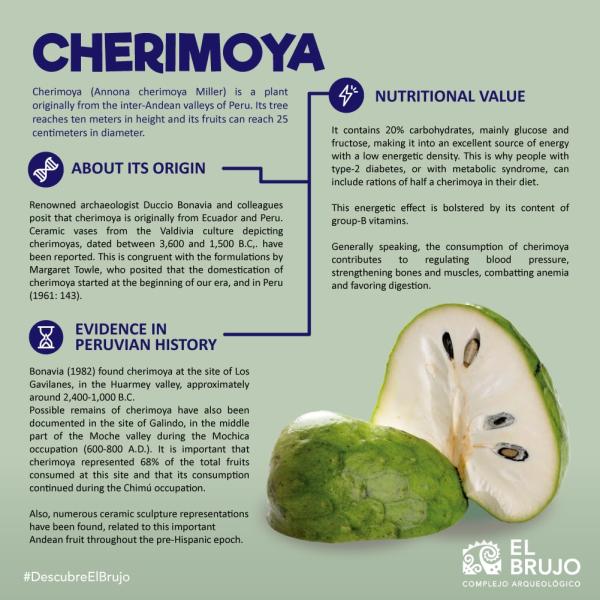- Visitors
- Researchers
- Students
- Community
- Information for the tourist
- Hours and fees
- How to get?
- Visitor Regulations
- Virtual tours
- Classic route
- Mystical route
- Specialized route
- Site museum
- Know the town
- Cultural Spaces
- Cao Museum
- Huaca Cao Viejo
- Huaca Prieta
- Huaca Cortada
- Ceremonial Well
- Walls
- Play at home
- Puzzle
- Trivia
- Memorize
- Crosswords
- Alphabet soup
- Crafts
- Pac-Man Moche
- Workshops and Inventory
- Micro-workshops
- Collections inventory
Students
Students
Infographics
Nutrition
Sweet potato
El camote además es fuente de vitamina A (en el caso del camote de pulpa anaranjada) y vitamina C, potentes antioxidantes que contribuyen a combatir el envejecimiento prematuro. La antocianina, presente en la pulpa del camote morado, y los polifenoles, existentes en las hojas del camote, parecen controlar el avance de células cancerígenas (Centro Internacional de la Papa, 2015; Vidal et al., 2018). Este tubérculo también es fuente de hierro, indispensable para superar la anemia y mejorar el rendimiento físico y mental (Vidal et al., 2018). Finalmente, el camote contiene altas concentraciones de calcio y fósforo, dos minerales importantes para el funcionamiento de nuestro organismo.
Lúcuma
La lúcuma (Pouteria lucuma) es la fruta nativa de los Andes. Es allí donde se encuentran las evidencias más tempranas de su consumo y domesticación. La suave capa amarilla de esta fruta comúnmente se come fresca y tiene un agradable sabor. Revisemos a continuación algunos alcances sobre su historia, su consumo como alimento, así como sus propiedades nutritivas y medicinales.
Llama and alpaca
La llama y la alpaca son los camélidos sudamericanos domesticados a partir de las antiguas especies de guanacos y vicuñas (camélidos silvestres), respectivamente. Empleados comúnmente como animales de carga y aprovechados en la elaboración de tejidos, la carne de estos camélidos era y sigue siendo una de las fuentes más abundantes de proteína animal si la comparamos con el pollo y la res.
El pallar
El pallar (Phaseolus lunatus) es una legumbre originaria de América. Es uno de los insumos más populares en la cocina peruana contemporánea y aporta notables nutrientes a nuestro organismo. Acompáñanos a conocer brevemente la historia del pallar, sus preparaciones y beneficios en la dieta.
Yellow aji pepper
Ají is the fruit used as a spice that is the most appreciated in Andean cuisine since times immemorial. The esteem enjoyed by ají was such that it competed with corn consumption. Throughout this note, we shall review the history of ají and its varieties, among which we shall highlight ají amarillo (yellow ají) as one of the most popular ingredients in contemporary Peruvian cuisine.
La anchoveta
La anchoveta (Engraulis ringens) es uno de los pescados más abundantes y consumidos de nuestro mar. Pese a la crisis generada por el Fenómeno del Niño y la sobrepesca en 1972, la recuperación de este pequeño pez ha sido notable y lo podemos disfrutar en la gastronomía actual. Revisemos juntos la historia de la anchoveta, conozcamos los platillos en los que es preparado y sus propiedades nutritivas.
Zapallo loche
El zapallo es un fruto que pertenece a las plantas de tallo rastrero o trepador. Entre todas las variedades de zapallo, el loche (Cucurbita moschata duchesne) es el fruto nativo de mayor consumo desde tiempos antiguos en América. En las siguientes líneas conoceremos parte de la historia de este zapallo, su arraigo en las costumbres gastronómicas de la costa norte peruana y sus propiedades nutritivas y medicinales.
Maize
Maize is the native cereal of the American continent. With the Spanish colonization and the globalization of the economies, corn was taken to every corner of the world and integrated progressively into the diet in China, India and the countries of Europe. In the following lines, we shall review rapidly the history of corn in Peru, its consumption in Peruvian cuisine and its nutritional values.
Potato
Among the minerals in the potato is potassium, whose contribution is to regulate the heartbeat, promote bone health and contribute to the generation of energy. Also, the potato contains antioxidants such as vitamin C, important in the prevention of cardiovascular diseases and cancer. Although the iron and zinc concentration is low, the high levels of vitamin C in potatoes benefit its optimal absorption in the body (Burgos & Hann, 2019).
Sapote
The sapote is a source of energy with low caloric levels. It also contains a high amount of water that helps us stay hydrated. This fruit is rich in vitamin A and vitamin C, important antioxidants that keep our body healthy.
The tropical fruit also contains B vitamins, among which the concentrations of vitamin B3 stand out, whose participation is linked to the proper functioning of the digestive system, the skin and the nervous system.
Finally, the sapote has minerals such as potassium, sodium, phosphorus, calcium, iron and zinc; whose contribution is to maintain the bones, the muscles, the circulatory system and the nervous system in healthy conditions.
Tollo
El tollo es una fuente de energía, contiene 89 calorías que luego es procesada por nuestro organismo. Tiene un contenido importante cantidad de proteínas de alta calidad, necesaria para mantener y regenerar las células del cuerpo. Además, es fuente de minerales como el calcio, fósforo y hierro.
A pesar de contener pocos niveles de vitaminas del grupo B (B1, B2 y B3), es relevante resaltar su papel en la transformación de los alimentos en energía. Específicamente la vitamina B1, o tiamina, ayuda a convertir los carbohidratos en energía; la vitamina B2, o riboflavina, contribuye a la producción de glóbulos rojos; y la vitamina B3 participa en el funcionamiento del aparato digestivo, la piel y el sistema nervioso (Pérez, 2018).
Fanshell
The fan shell is a source of energy. It also contains important levels of vitamin B12, the same one that influences the production of red blood cells. This helps prevent anemia and improve the immune system.
It is rich in nutrients such as omega 3, magnesium and potassium. Together, all three are capable of strengthening the cardiovascular system by preventing blood clots, relaxing blood vessels, and regulating blood pressure.
Faced with these benefits, it is necessary to say that people who suffer from high levels of uric acid should avoid excessive consumption of scallops, as it would cause gout or kidney stones (Lanata, s. f.).
Jack bean
The dry and mature seeds of canavalia can be used in human food, although they need to be boiled for several hours to soften. However, green beans, up to a certain point in their growth, are slightly toxic and can cause poisoning. It serves as a green manure because it fertilizes the soil, since it provides nitrogen to the soil. It is also an excellent fodder for animals. The roasted seeds are a good substitute for coffee.
Scientific studies show that, in the dry state, it provides a higher content of proteins, carbohydrates and fats compared to beans. This would have been a great contribution in pre-Hispanic times, given the absence or little presence of mammalian meat (León 2013).
Caigua
La caigua es una hierba trepadora que produce frutos de manera anual, los cuales miden entre 10 y 20 cm de longitud; originaria de la América tropical (Mostacero et al. 2009: 551, 553). Es una cucurbitácea que, probablemente, fue domesticada en el Perú prehispánico. Además de ser comestible, la caigua tiene propiedades medicinales como reducir el colesterol negativo, ser diurética y antiinflamatoria.
Yuca
La yuca o mandioca ("Manihot esculenta") es un tubérculo nativo del continente americano y apreciado a nivel mundial como alimento y, recientemente, por las industrias de biocombustible, bioquímicos y bioplásticos debido a sus importantes reservas de almidón. Se pueden diferenciar dos variedades de yucas: las yucas amargas, comunes en el área amazónica, y las yucas dulces, frecuentes entre los actuales territorios de Perú y México.
Suco
El suco ("Paralonchurus peruanus") suele habitar en fondos arenosos, areno-fangosos y cerca de estuarios. En su edad adulta, puede llegar a medir hasta 45 cm. En el Complejo Arqueológico El Brujo, localizado en el litoral del valle de Chicama (La Libertad), los restos más antiguos de suco se hallaron en los primeros estadios de ocupación humana en la Huaca Prieta, entre los años 6080 y 5887 a. C. (Dillehay 2017: 230).
Friar's plum
La ciruela del fraile, conocida también como cansaboca, ushum o usuma (Bunchosia armeniaca), es un árbol o arbusto nativo de Perú y de diversas zonas en el área andina. Los frutos de este árbol presentan una pulpa carnosa y rojiza, con una cáscara de tono verde olivo y un sabor dulce (según Mostacero et al., 2009: 442-443).
Cherimoya
La chirimoya (“Annona Cherimola Miller”) es una planta originaria de los valles interandinos del Perú. Su árbol llega a medir 10 metros de altura y sus frutos que pueden alcanzar hasta 25 cm de diámetro. Los conquistadores españoles la llamaban "manjar blanco", precisamente, por su sabor dulce. Contiene 20% de carbohidratos, principalmente glucosa y fructosa. Esto la convierte en una buena fuente de energía. El consumo de chirimoya regule la tensión arterial, fortalezca los huesos y músculos, combata la anemia y favorezca la digestión.
